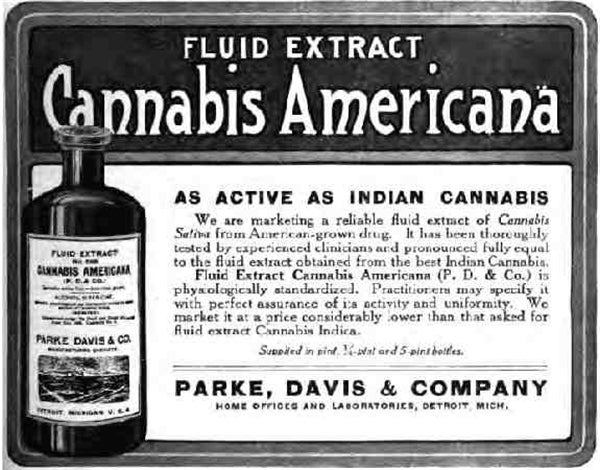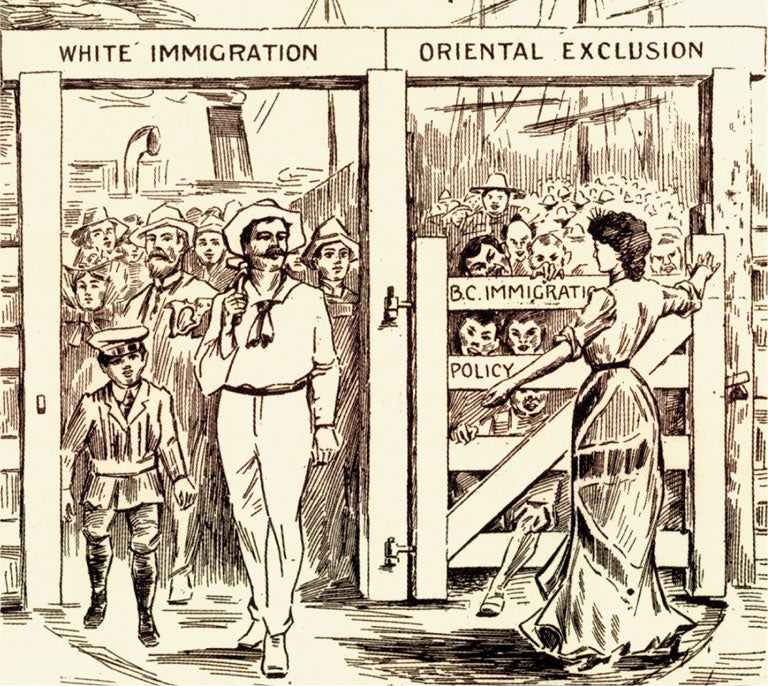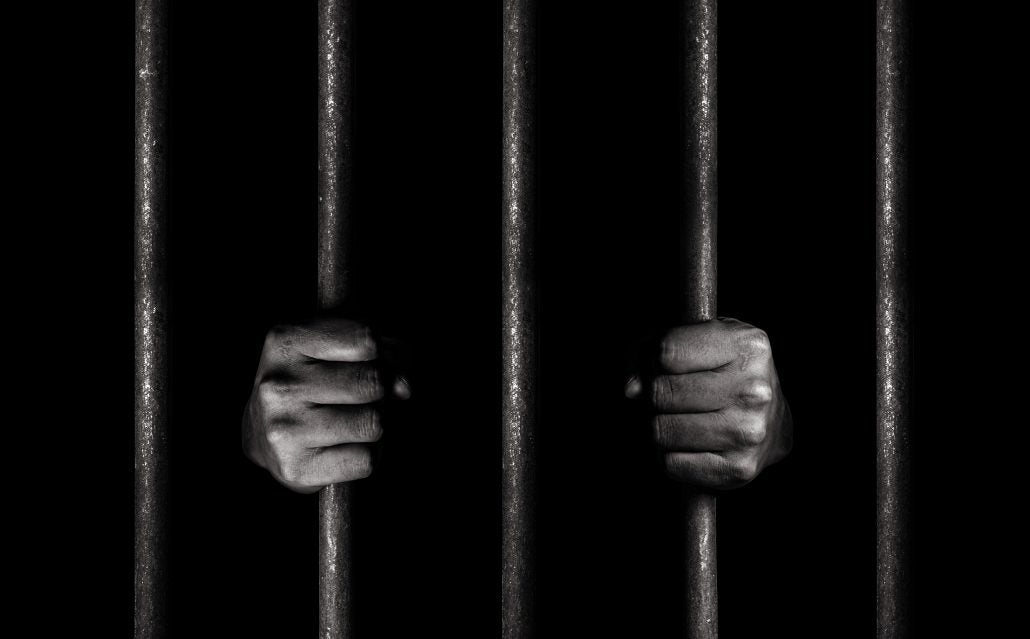Cannabis has certainly come a long way from the fringes of Canadian society. With its legalization back in October 2018, it’s safe to say that cannabis has finally reached the mainstream, and it’s here to stay. But it wasn’t always like this. For almost a century, it was illegal and there was a heavy cannabis stigma in society that permeated all walks of life, including cops, teachers, your parents (probably), and more.
Why, though?
It’s a long story, and unless we know the history of prohibition and why it happened, we won’t be able to end the cannabis stigma that continues to this very day.
A brief history of ancient cannabis
Cannabis has been used medicinally and recreationally for thousands of years. It grows naturally in Central Asia and India, and recent studies suggest cannabis first entered China, Japan, and Eastern Europe as far back as 10,000 years ago.
Hemp, a non-psychoactive variant of cannabis, was used as a textile to make everything from rope, clothes, fabrics, and shoes- and it’s believed the Chinese even used hemp to create an early form of paper! While there is evidence that cannabis was used medicinally and in religious rituals, analysis of plant material found at archaeological sites implies that the levels of THC in ancient cannabis were so low that it wouldn’t even get you high.
But the first solid evidence of psychoactive cannabis use are Chinese tombs dating back to 2500 BC, where analysis of the burned plant matter revealed THC levels much higher than expected, suggesting that mourners did indeed inhale THC-laced smoke.
Cannabis: Coming to (North) America
The Spaniards brought cannabis to North America in the 1500s, and throughout the 1600s, cannabis spread across the continent. In the US, settlers in Virginia were required, by law, to grow hemp for textiles and even George Washington, the first president of the United States, had abundant hemp crops on his land.
Cannabis tinctures: Medical cannabis hits the mainstream for 1st time
Cannabis tinctures, which are alcohol-based solutions containing dissolved cannabis extract, were the first form of medical cannabis to appear in North America, and they proliferated after an 1839 article by Dr. W.B. O’Shaughnessy called “On The Preparations of the Indian Hemp, or Gunjah”. As an Irish doctor living in India, he saw firsthand how Muslim and Hindu physicians used cannabis medically and shared his knowledge through lectures and articles after returning to Europe.
Cannabis tinctures soon became the most common form of cannabis in the West, and they were prescribed by doctors. For a more detailed history of cannabis tincturesor a list of the best THC tinctures click the links.

Image courtesy of Mass Roots.
The cannabis stigma begins with racism
We can’t talk about the rise of the cannabis stigma without first mentioning the United States. As Canadians, we’re often living in its enormous shadow, as Prime Minister Pierre Trudeau (father to PM Justin Trudeau) famously told President Nixon back in ‘69:
“Living next to you is in some ways like sleeping with an elephant. No matter how friendly and even-tempered is the beast, if I can call it that, one is affected by every twitch and grunt.”
In Canada and the USA, the cannabis stigma and drug prohibition in general began through its association with non-white immigrants.
The racist reason why it’s called “marihuana” in the USA
As mentioned earlier, cannabis tinctures were common across the United States, but by this point, most Americans were only familiar with using cannabis medicinally.
It wasn’t until the 1910 Mexican Revolution, which caused a massive increase in Mexican migration to the United States, from approximately 20,000 per year in the 1910s to 50,000-100,000 in the 1920s. The Mexicans used cannabis recreationally and referred to cannabis as “marihuana”.
The dramatic rise in Mexican migration and their recreational use of ‘marihuana’ was new and extremely concerning to white Americans at the time. By the 1930s, ‘marihuana’ was common in American English, practically replacing ‘cannabis’ with the foreign-sounding ‘marihuana’, which was used to stoke fear and racism through its negative association with Mexican immigrants.
Soon, newspapers were terrifying the public with headlines like “Evil Mexican Plants that Drive You Insane” and warning of the dangers of cannabis, which included violence, rape, insanity, and even death. In our opinion, that sounds more like the dangers of alcohol than cannabis, but we’ll get to that later.
In 1936, “Reefer Madness” came out, a highly influential film full of anti-cannabis propaganda, and in 1937, the Marihuana Tax Act was passed. The Marihuana Tax Act was a punitive tax designed to prohibit cannabis, as the taxes were so exorbitantly high that nobody could pay it. The tax was mainly thanks to Harry Anslinger, the head of the Federal Bureau of Narcotics, who, after needing something to do after alcohol prohibition was repealed in 1933, turned his attention to cannabis and racist fearmongering in his anti-cannabis campaigns.

Meanwhile, in Canada
While Americans were busy hating on Mexican immigrants, in Canada, we had a different focus- Asian immigrants, particularly those from China and Japan. In 1907, the racist Asiatic Exclusion League was formed in Vancouver to prevent Asian immigration to Canada, with “White Canada Forever” being a popular rallying cry at the time.
On Sept. 7, 1907, the Asiatic Exclusion League held a parade in downtown Vancouver, including a large banner that said: “Stand for a White Canada”. The parade turned into a rioting mob of around 8,000 men that attacked the Chinatown and Japantown neighbourhoods, causing thousands of dollars in property damage.
This led to the passage of the Opium Act of 1908 due to opium’s association with Chinatown and was meant to protect white Canadians from being influenced by the Chinese, who were seen as a threat to Canadian society. This was the first drug law in Canada, but it was quickly followed in 1911 by the Opium and Drug Act, which outlawed opium, morphine and cocaine.
Enter Judge Emily Murphy, a pioneering feminist with a complicated legacy that includes being the first female judge in the British Empire, who also fueled a racist drug panic while being a staunch supporter of eugenics and forced sterilization of Indigenous women.
Writing for Maclean’s under the nom de plume Janey Canuck, she authored a series of articles that became the basis of her bestselling 1922 book, The Black Candle, that railed against drugs like opium and cannabis. In it, she describes Chinese people as “black-haired beasts in our human jungle”, saying:
“It is hardly credible that the average Chinese [opium] peddler has any definite idea in his mind of bringing about the downfall of the white race, his swaying motive being probably that of greed, but in the hands of his superiors, he may become a powerful instrument to that end.”
She also said cannabis turns people into “raving maniacs [who] are liable to kill or indulge in any form of violence to other persons, using the most savage methods of cruelty without, as said before, any sense of moral responsibility”, according to Vice.
In 1923, a year after her book was published, cannabis was prohibited under the Narcotics Drug Act Amendment Bill– making Canada a pioneer, as it precedes the American’s Marihuana Tax Act by 14 years!

Image courtesy of Canada’s History.
Cannabis prohibition: At what cost?
It’s hard fighting decades of anti-cannabis propaganda that began long before most of us were even born, and the fact that cannabis is legal now can’t erase all the harms prohibition caused.
Not only did it block scientific research into cannabis’ potentially life-changing health benefits that we’re only beginning to understand now, but it also ruined countless lives through unjust laws that disproportionately affected minorities- despite similar rates of cannabis use amongst racial groups.
It’s a lot of missed potential that we’re only beginning to catch up on and realize.
Lingering cannabis stigma: Criminal convictions
If we’re in a new era of cannabis acceptance, why are hundreds of thousands of Canadians still affected by the negative consequences of cannabis offences? Especially now, since what they did is no longer illegal. You’d think the government would be committed to fixing this injustice, right?
In reality, they’re dragging their feet. They’re talking about making it easier to get a pardon (such as waiving the $631 application fee) when they should be focusing on expungement instead.
A criminal record can drastically affect your ability to travel abroad as you can face difficulties obtaining a passport, and many countries- such as the USA- bar people with criminal records or require you to apply for special waivers and exemptions, and even that is no guarantee you’ll be allowed in.
Even something as simple as admitting to past cannabis use could be enough to get you deemed inadmissible to the USA, and whether or not you partook when cannabis was illegal or legal may not have any bearing on the matter if you’re considered to be a ‘cannabis addict’.
A record can affect your job prospects- as many job applications ask if you’ve ever been convicted and haven’t received a pardon- and even finding housing can become more challenging than it already is as a criminal record can negatively impact your ability to lease an apartment or qualify for a mortgage.
The Campaign for Cannabis Amnesty is fighting to ‘right history’s wrongs’ and is a great resource on the topic.
Breaking unjust laws
You might argue that even though cannabis is legal now, if you have a cannabis conviction back in the ’90s, you broke the law, and that’s that. But it’s not so simple. Sometimes, when it comes to unjust laws, the only way to change them is through protest and, yes, even breaking the law.
Take legendary American feminist Susan B. Anthony, who was arrested in 1872 for voting in New York because it was illegal for women back then. Or Rosa Parks, who broke the law in 1955 by refusing to give up her seat on the bus to white passengers in Alabama, leading to the Montgomery Bus Boycott that laid the groundwork for the civil rights movement.
Speaking of which, Martin Luther King Jr. himself even said, “One has a moral responsibility to disobey unjust laws,” in his Letter from a Birmingham Jail.

Legalization: A brave new world?
Anti-cannabis propaganda and views still permeate the cultural consciousness to this very day- from doctors who refuse to consider the medical benefits of cannabis to politicians dragging their feet on granting amnesty and pardons for cannabis convictions to stereotypes that portray stoners as lazy or stupid.
It’s worth noting that in 2018, when Canada legalized recreational cannabis, it was only the second industrialized nation to do so after Uruguay. While Canadians can be proud of that accomplishment, in many places across the country, it’s harder to get cannabis now that it’s legal than when it was illegal!
How can that be?
Simply put, the decision to legalize cannabis wasn’t about giving Canadians ‘freeing the weed’- it was about giving the powers-that-be more control through non-competitive practices like government-controlled monopolies on distribution and online sales.
There’s a reason why the legal system can’t compete with the black market, and licensed retailers and producers will point to the black market not having to go through the rigorous testing and standards that they do, but that’s not the whole story.
Hypocrisy and crony capitalism at the highest levels
After decades of harassing peaceful cannabis users, many of the same high-ranking cops and tough-on-crime politicians turned around and used their ‘expertise’ in harassing cannabis users and growers as justification for getting cushy jobs in the C-suites of licensed growers. And this is despite accusations of profiteering and conflicts of interest.
The ones whose livelihoods depended in part on punishing cannabis users and putting them in jail are the ones to lead us into this brave new world of legalization?! What are they smoking?
Not to mention regulations that barred anyone with previous cannabis convictions from working in the industry, which contributed to a massive brain drain that ensured that only the black market would benefit from the expertise and knowledge of generations of cannabis growers.
Some would argue that legalizing cannabis only made it easier for cops to target and harass cannabis users, not necessarily with jail time but through fines. Back when it was illegal, cannabis convictions were an extremely low priority because if they tried to prosecute you over 3.5 g of weed, chances are the cop would get laughed at, and the judge would throw the case out of court, and rightfully so. Nonviolent offences like these would clog up the legal system and take already limited resources from more important things.
But now, if a cop catches you blazing one on a park bench when you’re not supposed to, you get a nice, easy fine that saves the police time while not tying up the courts over something so frivolous, while also presenting authorities an easy opportunity to make money off of you.
Cannabis vs. alcohol
Cannabis is proven to be less harmful than alcohol on both a societal and individual level. When it comes to diseases, deaths, violence, and crime, it’s no comparison, and alcohol is by far the greater social evil. You’ve probably heard someone say that nobody has ever overdosed and died on cannabis, and that’s true. But you can’t say the same for alcohol. In fact, just drinking a mickey or a two-six can be enough to kill you depending on your tolerance to alcohol, and yet, you can walk into any liquor store, and the shelves are packed full of potentially fatal poison.
We’re inundated with beer commercials on TV, at sports arenas, in fancy spreads in magazines, and bars. Our culture is practically soaked in booze.
Even looking at the stereotypes of the drinker vs. the stoner shows how much more harmful alcohol is than cannabis.
If you’re thinking of alcoholics or the effects of drinking too much alcohol- what comes to mind? You’re probably thinking of people being rowdy, reckless, and being prone to violence, public urination, and vomiting.
Stoners? The worst you have is that we’re unmotivated or lazy hippies who get the munchies.
Besides, what another recreational drug has as much potential as cannabis does? It may help with everything from depression, anxiety, chronic pain, severe epilepsy, and even fighting cancer, to name a few. Some may say that none of that is proven, and it is true that a lot more ressearch needs to be done, which should be easier to do now that cannabis is finally legal.
On the other hand, alcohol has very few medical uses, with the biggest being treating alcohol withdrawal (aside from its use as an antiseptic and disinfectant, of course).

Notice how cannabis is less harmful than alcohol and tobacco?
Conclusion
We’ve still got such a long way to go- from old cops still stuck in their ways of harassing pot smokers to boomers who think cannabis is only for the hippies, to reversing old convictions for cannabis possession, to the killjoys who wish cannabis was still illegal.
And if you thought it was bad in Canada, there are many places across the world where you could face the death penalty over a baggie of weed.
Sources
African Studies Center- University of Pennsylvania: “Letter from a Birmingham Jail [King, Jr.]”.
Business Insider: The racist origins of marijuana prohibition.
Cannabis Amnesty: The Racist History Behind Canada’s Marijuana Prohibition.
The Economist: What is the Most Dangerous Drug?
History Today: The Mexican Revolution.
Library of Congress: The History of Mexican Immigration to the U.S. in the Early 20th Century.
New Scientist: Founders of Western civilisation were prehistoric dope dealers.
One: 8 people who broke the law to change the world
PressProgress: 500,000 Canadians Have Old Criminal Records for Pot Possession. Trudeau Won’t Commit to Pardon Them.
Psychedelic Library: Review of the Black Candle.
Science Mag: Oldest evidence of marijuana use discovered in 2500-year-old cemetery in peaks of western China.
Vice: A Running List of Canada’s Biggest Weed Hypocrites.
Vice: The Mother of Canada’s Marijuana Laws Is a Feminist Hero and a Racist Monster.
Vox: Black and white Americans use drugs at similar rates. One group is punished more for it.
Washington Post: At George Washington’s Mount Vernon, a luscious crop of cannabis nears harvest time.
